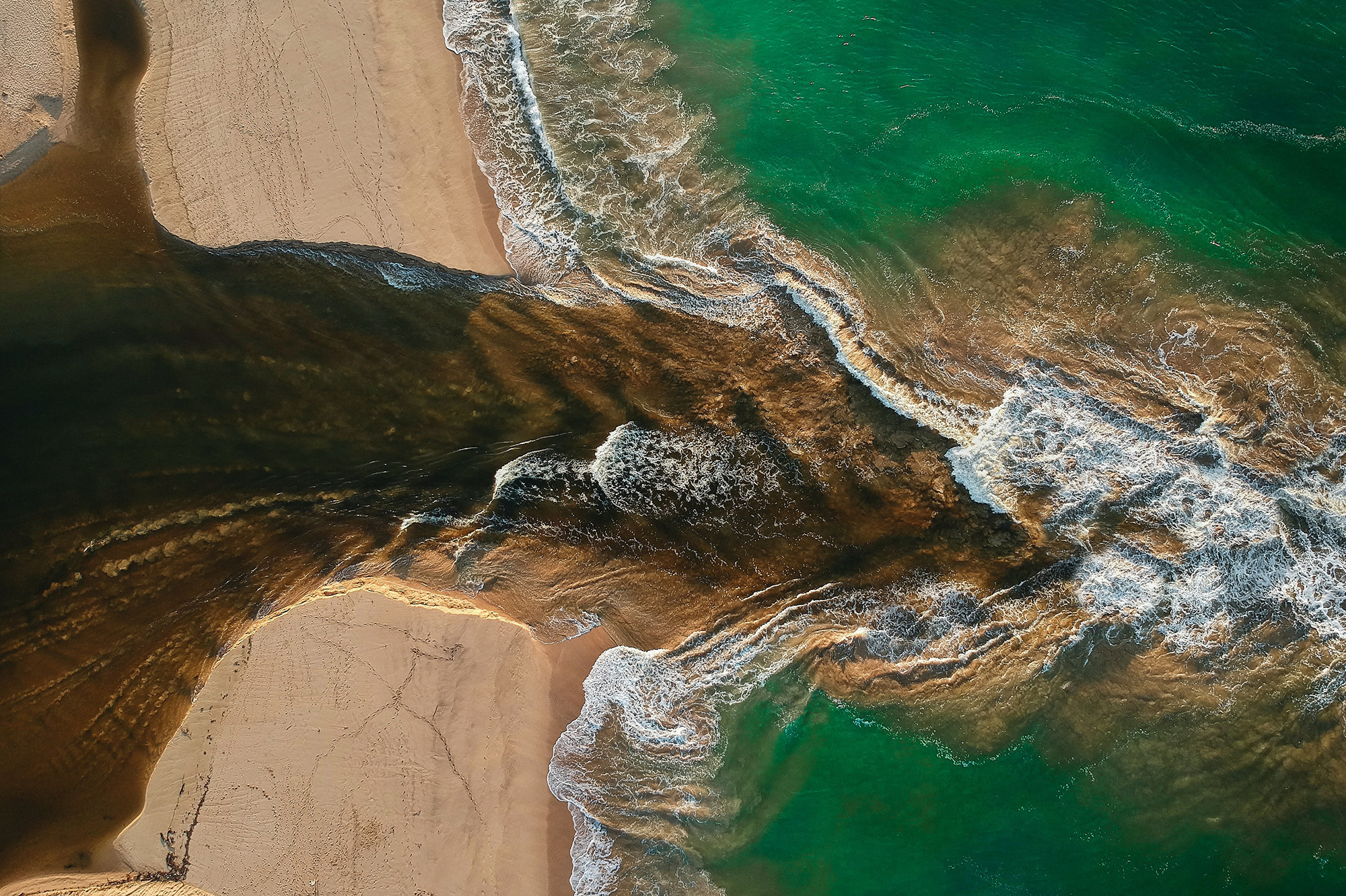Story
PML scientists contribute to advancing understanding of the ‘nitrogen footprint’
2 October 2023
This week PML scientists join the annual meeting of the UKRI GCRF South Asian Nitrogen Hub to discuss programme progress as well as help launch a brand new Massive Open Online Course (MOOC) on the impact of nitrogen pollution on tropical coral coasts.

Land run-off into the Sri Lankan marine environment. Michael Hacker | Unsplash
Through evolving agricultural practices, energy generation, wastewater management approaches and other activities, humans have significantly altered the nitrogen flows on Earth. Nitrogen is vital for life on Earth but the current level of input into the environment is putting health, climate, ecosystems and livelihoods at risk across the world.
Nitrogen pollution is now recognised as one of the six planetary boundaries that we have now exceeded, alongside climate change, deforestation and biodiversity loss. Humans have more than doubled annual terrestrial cycling of reactive nitrogen (Nr) compounds, which has also led to:
- pollution of freshwater and marine systems, affecting drinking water and livelihoods
- air pollution shortening human lives
- greenhouse gas emissions that also deplete stratospheric ozone
- impacts on soil quality
- threats to ecosystem services
- increased human diseases and allergies like asthma and colon cancer
The Hub brings together world-leading scientists from over 30 research organisations across South Asia and the UK and aims to: investigate the impacts and flows of nitrogen pollution; explore ways to reduce nitrogen waste in agriculture; encourage policy change; raise awareness of the nitrogen challenge, and predict future nitrogen scenarios.
In particular, PML scientists are implementing models to understand the marine footprint of nitrogen pollution and its impact on marine ecosystem. At regional scale, PML modellers are reconstructing the nitrogen budget to identify the major sources of nitrogen in the South Asian seas, and at local scale, supporting the design of management practices that will minimise the impact of nitrogen pollution in the lagoon around the island of Thoddoo (Maldives) and the economy of the island.
During the meeting a free MOOC, titled ‘Nitrogen Pollution: Threats to Tropical Coral Coasts’, will be officially launched. Learners will take a dive into the world of marine ecology to better understand the impacts of nitrogen pollution and poor nitrogen management on tropical coral coasts.
Dr Yuri Artioli, Marine Ecosystem Modeller at PML and lead representative on the UKRI GCRF South Asian Nitrogen Hub, said:
“Nitrogen pollution is the next big environmental challenge that global society needs to address. We often talk of carbon footprints but we need to also start thinking of nitrogen footprints if we are to start reducing this currently increasing issue.”
“The ‘Nitrogen pollution: threats to tropical reefs’ MOOC, to which we contributed animations on dispersion of pollutants around the island of Thoddoo (Maldives), is an interactive and engaging way of learning about this globally concerning problem. We hope it will not only help raise awareness of the issue to course participants, who are interested in their individual environmental impact on the world, but also to those involved with policymaking at national and international levels to help drive positive global change.”
Related information
UKRI GCRF South Asian Nitrogen Hub
Massive Open Online Course (MOOC) Nitrogen pollution: threats to tropical reefs